6 Bodyweight CrossFit; Beginners Home Workout Guide

Having a hectic schedule, finding time for a workout was always a struggle for me, particularly as a beginner. Finding effective workout solutions often feels like a challenge. Especially that accommodates a busy schedule and minimum equipment. But I found a solution to my problem. And of course, yours too! Bodyweight CrossFit workouts! A versatile and accessible alternative to traditional gym workouts, specifically for beginners. Since then, these workouts have been my go-to solution for staying healthy and fit.
Let’s delve into the realm of bodyweight CrossFit workouts. In this comprehensive guide, you’ll not only find instructions. But I have some tips for you. These tips will help you master your workouts.
Explore the transformative power of bodyweight CrossFit workouts! Get ready to say hello to a stronger, fitter you!
6 Best Bodyweight CrossFit Workouts
1. Push-ups
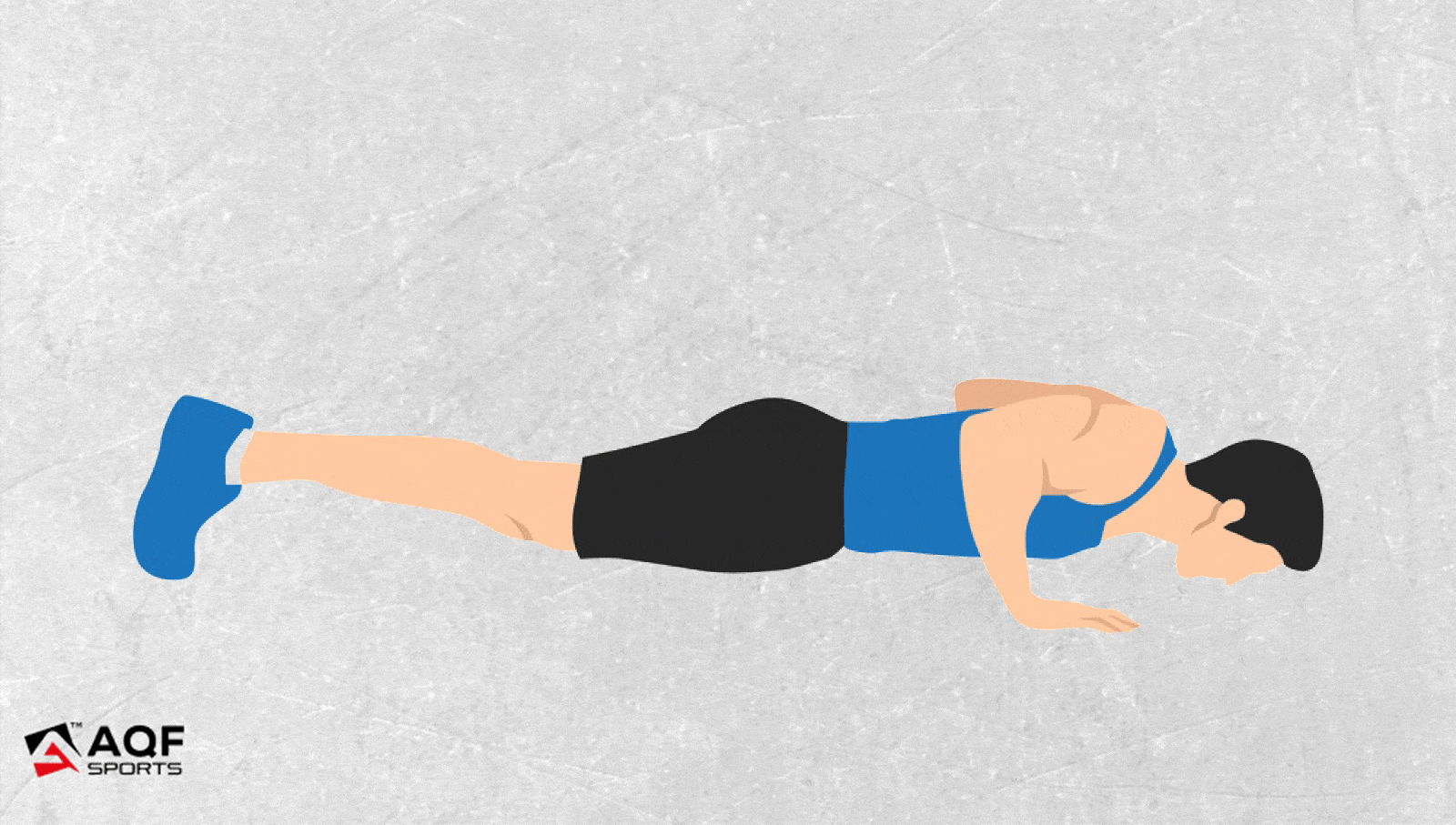
Pushups build upper body strength. This exercise engages core muscles. This helps to stabilise the body and develop core strength. Moreover, muscles used in pushing movements are also strengthened. This helps to improve activities of daily life and sports. Also, they can be modified to suit different fitness levels. Hence, they are beneficial for beginners and pros alike.
Suggested Read: 15 Shoulder Exercises for Sculpting your Upper Body Muscles
You can also increase the difficulty level by using the resistance band. This will make your exercise more challenging. Also, it will engage additional muscle groups. Place the band around your neck and hold the ends in each hand.
Instructions:
- Start in a plank position with your hands slightly wider than shoulder-width apart. Extend your arms fully, toes on the ground.
- Bend your elbows, keeping them close to your sides.
- Lower your chest until it almost touches the ground. Ensure maintaining a straight line from head to heels.
- Push through your palms to straighten your arms. and
- Return to the starting position.
- Repeat for the desired number of repetitions.
2. Handstand push-ups (against a wall)
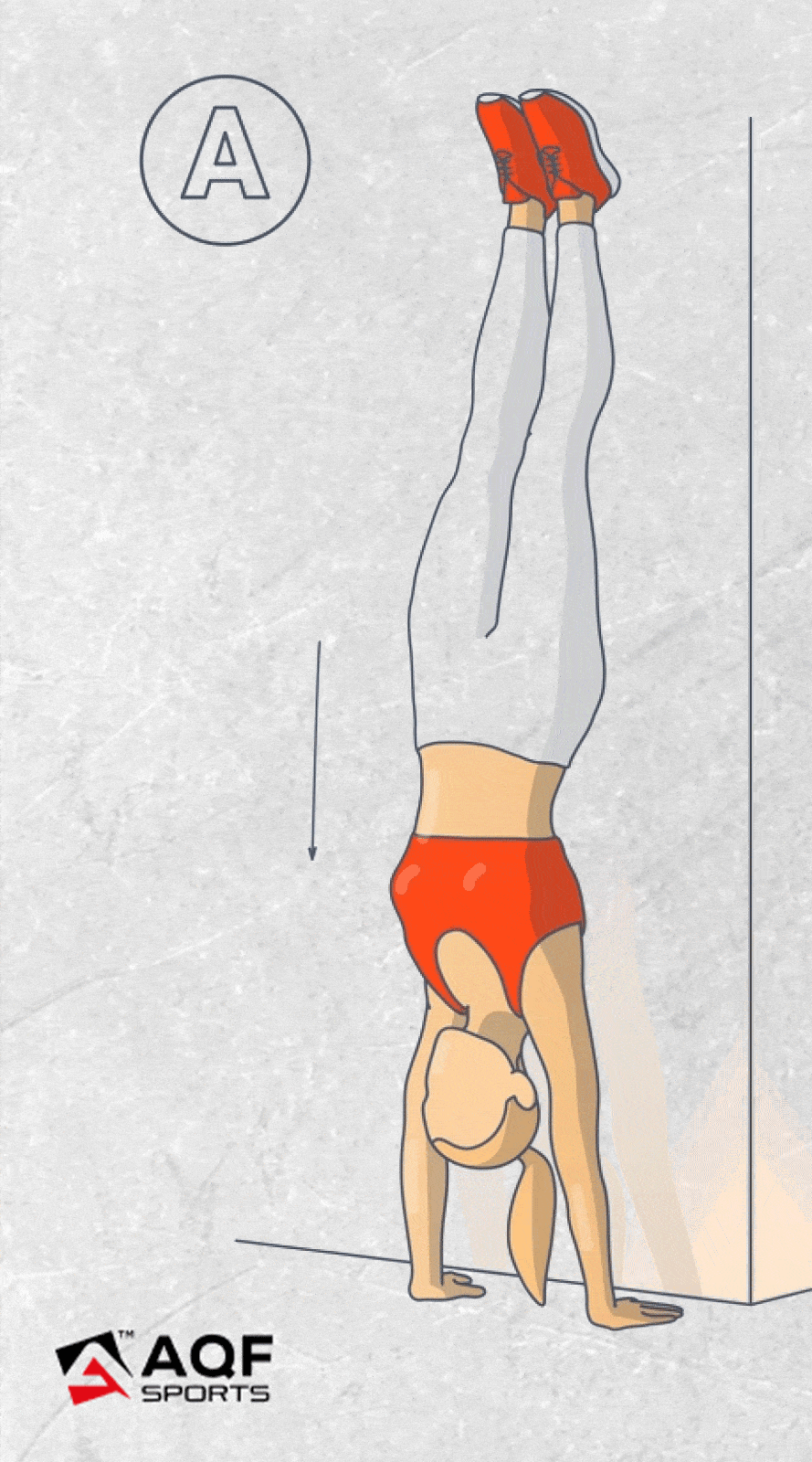
Handstand pushups develop upper body strength and hypertrophy in the shoulders, triceps, and upper back. It also improves overall core strength and maintains balance and stability. It particularly enhances shoulder stability and mobility. Thus, reducing the risk of injury and improving overall shoulder strength.
Instructions:
- Begin by facing a wall. Place your hands on the ground about shoulder-width apart. Face the fingers forward.
- Kick up into a handstand position with your heels resting against the wall. Keep your arms fully extended.
- Maintain a straight line from your wrists to your hips. Avoid arching or rounding your back.
- Slowly lower your body towards the ground by bending your elbows. Allow your head to descend towards the floor.
- Keep your elbows close to your body as you descend. Aim to lower your head between your hands.
- Press through your palms to push your body back up to the starting position
- Repeat the movement for the desired number of repetitions.
3. Spiderman push-ups
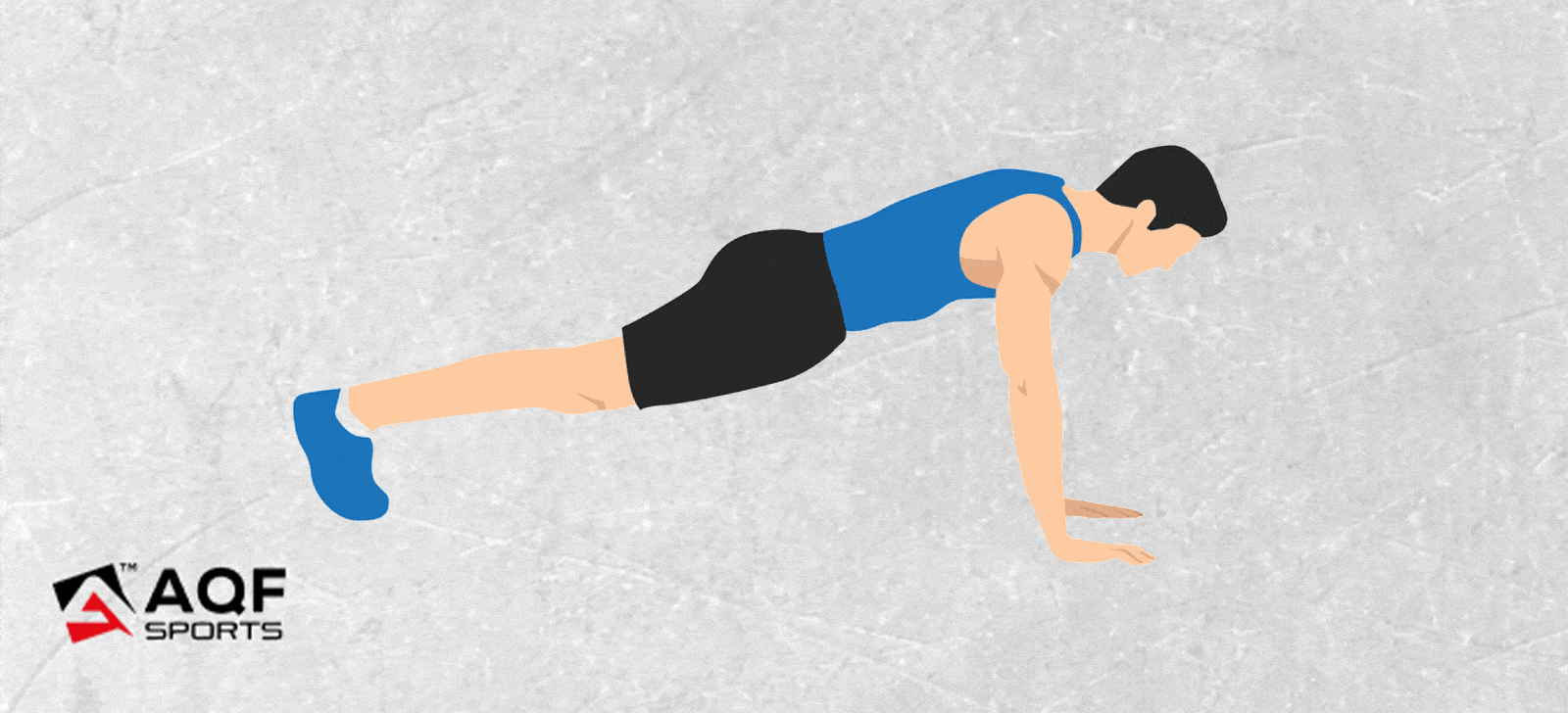
Spiderman push ups target the muscles of the chest, shoulder, and triceps. This helps build upper body strength and muscle definition. It also engages core muscles to lift and hold the knee towards the elbow. This helps stabilise the body and develop core strength. Bringing the knee towards the elbow helps improve hip mobility and flexibility.
Instructions:
1. Start in a high plank position with your hands slightly wider than shoulder-width apart. Keep your arms fully extended, and toes on the ground.
2. Lower your body towards the ground by bending your elbows. Keep them close to your sides.
3. As you lower your body, simultaneously lift your right knee towards your right elbow. Bring it as close to your elbow as possible.
4. Press through your palms to push your body back up to the starting position. Simultaneously, return your right leg to the plank position.
5. Repeat the movement on the left side. Lift your left knee towards your left elbow as you lower into the push-up.
6. Alternate sides for each repetition.
4. Plank
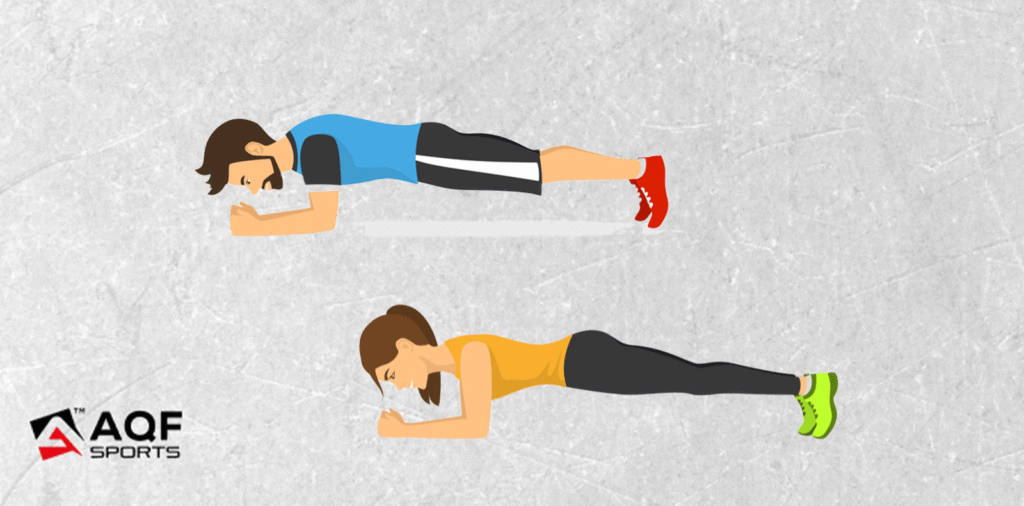
Planks improve overall posture by strengthening the muscles that support the spine and pelvis. It also strengthens the core muscles that support the lower back. Thus, reducing the risk of low back pain and injury. Moreover, targeting core muscles also enhances stability and balance.
Suggested Read: The Easy Way to Do Strength Training Using Bands
Instructions:
- Start in a prone position on the ground. Support your upper body with your forearms. Keep your elbows directly beneath your shoulders.
- Extend your legs behind you. Rest on the balls of your feet. Make sure your body forms a straight line from head to heels.
- Draw your navel towards your spine and squeeze your glutes. This will engage your core muscles.
- Maintain a neutral spine. Avoid sagging or arching your back.
- Hold this position for the desired duration. Start with 10 seconds. Focus on maintaining proper form. Breath rhythmically.
- Keep your head in line with your spine. Look down at the floor to prevent straining your neck.
5. Pistol squats (single-leg squats)
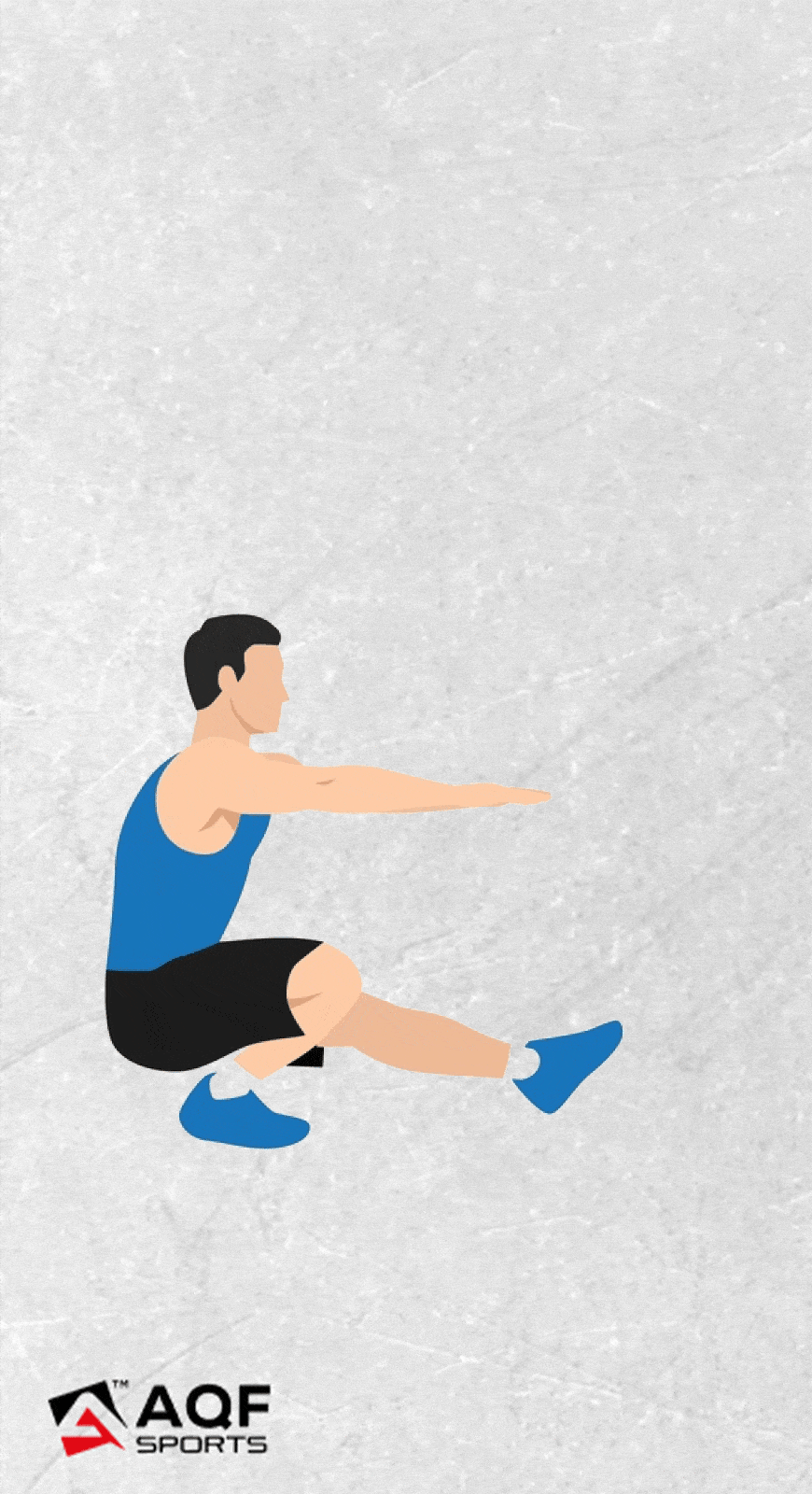
Pistol squats require balance and stability since the movement is done on one leg. This develops strength and stability in each leg individually. It also promotes hip, knee, and ankle mobility, improving flexibility. Its target muscles are quadriceps, hamstrings, glutes, and calves.
Instructions:
- Begin by standing on one leg. Extend your other leg in front of you.
- Extend your arms forward for balance.
- Slowly lower your body into a squat position on the standing leg. Keep your chest up and back straight.
- Lower your body as comfortable. Maintain balance. Bring your thigh parallel to the ground.
- Keep your extended leg elevated off the ground throughout the movement.
- Press through your heel. This will push you back up to the starting position.
- Repeat the movement for the desired number of repetitions.
- Switch legs.
6. Sit-ups
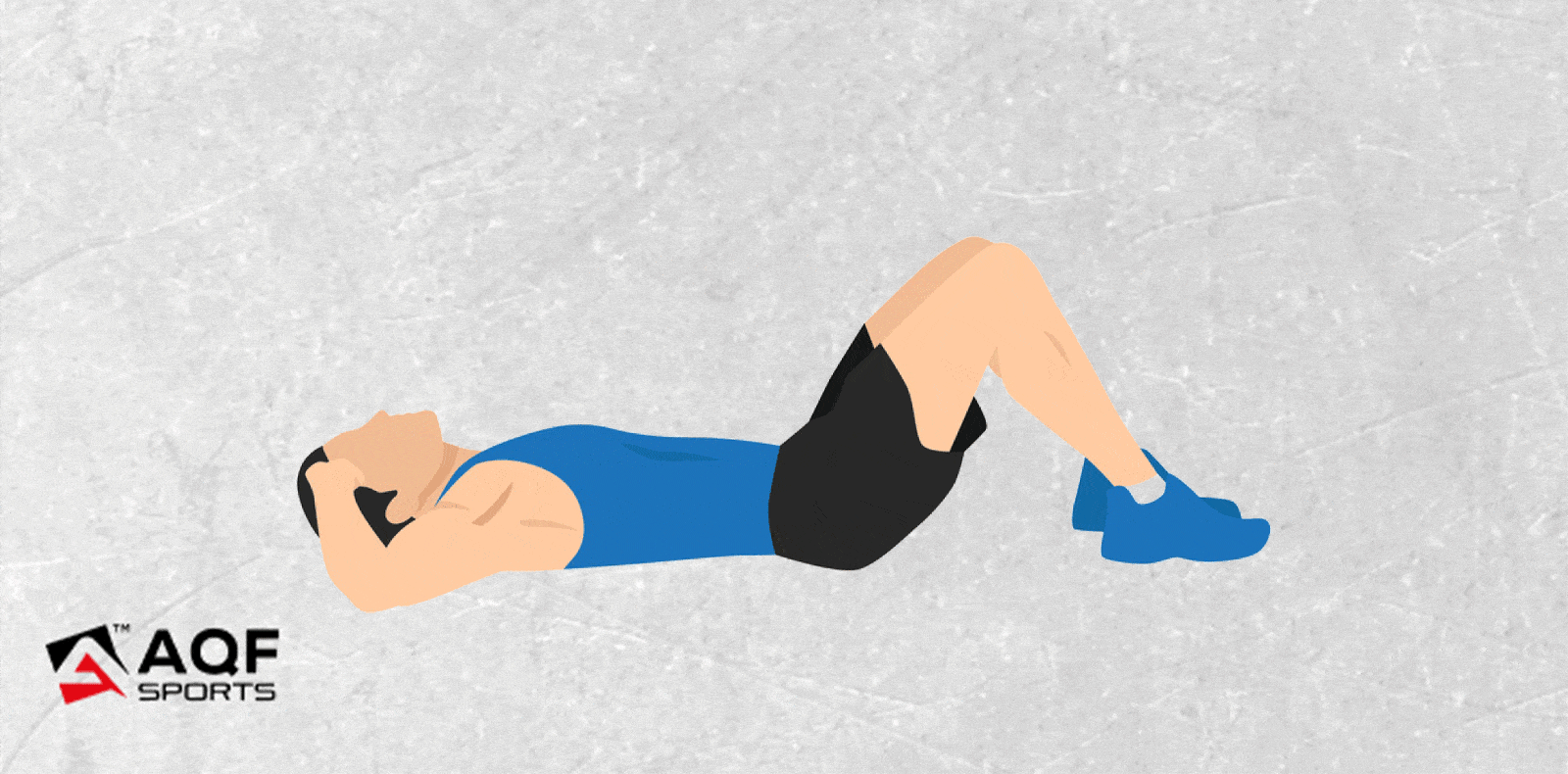
Sit-ups target the abs muscles, obliques, and hip flexors. It improves flexibility in the spine and hip flexors. Thus, reducing the risk of lower back pain improves overall mobility. Enhanced spinal endurance also reduces lower back injury. It improves functional fitness for activities like bending, lifting, and twisting.
Suggested Read: The 7 Best Back Exercises to Strengthen Back Muscles
Instructions:
- Lie on your back with your knees bent and feet flat on the ground.
- Draw your belly button towards your spine by pressing your lower back into the ground. This engages your core muscles.
- Place your hands behind your head or crossed over your chest. Avoid pulling on your neck.
- Exhale as you lift your upper body off the ground. Bring your chest towards your knees.
- Keep your neck in a neutral position. Avoid tucking your chin into your chest.
- Inhale as you lower your upper body back down to the starting position.
- Repeat for the desired number of repetitions.
Tips to master your bodyweight CrossFit Workouts
- Maintain proper form throughout. This will protect you from injury.
- Start with a manageable number of repetitions. Gradually increase the intensity as fitness improves.
- Stay consistent to maximise benefits.
- Make the movements in a controlled manner to avoid strain.
- Maintain a steady breathing pattern. Inhale and exhale deeply to oxygenate your muscles and maintain focus.






